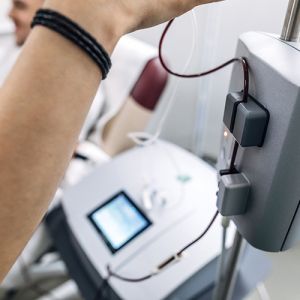Fibromyalgia Back Pain
Fibromyalgia Back Pain
In the United Kingdom, fibromyalgia, a condition that causes widespread chronic pain and sensitivity, affects 2 to 4 percent of both men and women (women ages 20 to 50 are more commonly affected).
As a result, there are still unanswered issues about fibromyalgia, such as why it affects more women than men. And why is it so difficult to recognise and cure fibromyalgia? Why do some fibromyalgia sufferers have back pain more than others?
What causes fibromyalgia has baffled many scientists. Although the precise cause of fibromyalgia is unknown, doctors do know that the condition can be brought on by an injury, surgery, infection, psychological trauma (such as a time of intense stress), or even merely through an accumulation of symptoms that eventually lead to the diagnosis of fibromyalgia.
The way a brain processes pain signals is impacted by fibromyalgia. Essentially comes from a breakdown in communication between the central, peripheral, and autonomic (vegetative) nerve systems, which causes abnormal or exaggerated feelings. The term “central pain sensitization” refers to this. You experience a decreased threshold for pain because it makes your nervous system “wounded up” and constantly hyperactive.
For instance, poking someone who doesn’t have fibromyalgia might not be a huge concern, but for someone who has fibro, that same amount of touch can result in a lot of pain or discomfort.
Contrary to arthritis, which causes pain in particular joints, fibro sufferers experience discomfort more in their muscles. Since it is a widespread discomfort, your entire body is in pain. The newest diagnostic standards for fibromyalgia require that patients have pain in eleven of the body’s major regions. These include low back, left upper, right upper, left lower, and right lower.
Even though fibromyalgia can cause back pain, if you only have back pain and no other fibromyalgia symptoms, your pain is probably not related to the condition.
Sleep problems
In addition to discomfort, fibromyalgia patients frequently struggle with sleep issues. Patients with fibromyalgia may wake up feeling exhausted even after spending hours sleeping. That can be as a result of pain keeping them awake at night, or they might have other sleep-related problems like restless leg syndrome or sleep apnea. In turn, this restless sleep may contribute to crippling daytime tiredness.
Fibro fog
Many fibromyalgia patients lament having “fibro fog,” which makes them feel as though they are unable to focus, carry on meaningful discussions, or even remember specific details like plans or where they put items. Lack of sleep may contribute to fibro fog. Another hypothesis is that fibromyalgia sufferers may be experiencing a particular neurological phenomenon.
Co-existing health problems
Fibromyalgia frequently coexists with other conditions, such as TMJ, migraine, IBS, and interstitial cystitis. That’s all followed by a slew of hypersensitivity to cold, light, noises, and odours. As a result, it may feel that fibromyalgia sufferers have a long list of health issues, which can be very frustrating.
Long-lasting back pain is one of the symptoms of fibromyalgia, which can also cause a number of other issues. Paraspinal lumbar discomfort, often known as back pain, is a condition that is frequently reported by patients and noticed by doctors. All the bodily parts that are ‘used’ on a regular basis, such as your hands, neck, or upper or lower back, could be painful.
The back includes a lot of muscle fibres to support posture, and muscles, in general, are frequently uncomfortable in fibromyalgia. Additionally, fibromyalgia patients may experience some lumbar spine wear-and-tear arthritis, which is worsened by the condition. In fact, it’s not uncommon for people with fibro to also have other illnesses like osteoarthritis or inflammatory arthritis.
About 80% of people living in the UK will have lower back pain at some point in their life, making it one of the most frequent medical complaints. How can you tell if your lower back pain is caused by fibromyalgia or something else if you have it?
The solution is complex. If you have back pain along with other symptoms, it’s possible that you have fibromyalgia in addition to another condition, or even a completely separate illness.
When it comes to fibromyalgia, misdiagnoses are widespread, both in terms of not receiving a diagnosis when you actually have the condition and in terms of receiving a diagnosis when you actually have another health issue.
Fibromyalgia is technically an exclusion diagnosis. This implies a doctor should completely rule out any other conditions before diagnosing you with fibromyalgia.
A comprehensive consultation with a rheumatologist is essential because of this. If you have fibromyalgia and discover that your current course of therapy isn’t providing relief from your fibromyalgia back pain, you may have a new or additional diagnosis, such as one of the following:
A muscle or ligament strain
Perhaps you pulled a back muscle while lifting a big box, bending over to grab something in a high cupboard, or picking up your child or grandchild. If you’re not in decent physical shape, a rapid movement or constant use of your back (like performing repetitive motions) can strain it.
Axial spondyloarthritis
If you experience lower back pain along with pain in other areas of your body, such as your knees, jaw, neck, or shoulders, you may have fibromyalgia, which causes generalised pain, or you may have axial spondyloarthritis (AxSpA), which is an inflammatory form of arthritis that affects your spine and the region where it meets your pelvis (sacroiliac joints). Despite the fact that it can also affect other joints and parts of your body, back pain is one of the main symptoms of AxSpA.
AxSpA is frequently separated into two groups. Radiographic AxSpA, also known as ankylosing spondylitis, denotes the presence of visible joint damage on X-rays. The condition known as non-radiographic AxSpA (nr-AxSpA) is fundamentally the same as radiographic AxSpA, but without obvious joint injury.
Axial spondyloarthritis and fibromyalgia have quite distinct causes and treatments (AxSpA is inflammatory and caused by an overactive immune system attacking the joints). It’s crucial to receive the proper diagnosis so that you can begin the appropriate treatment and feel better.
Scoliosis
Scoliosis, a condition where the spine curves to one side, maybe something you were unaware of. Scoliosis frequently manifests physically during childhood, although back pain may not appear until later in life.
Bulging discs
Your spine’s nerves could become compressed if the soft discs between your vertebrae enlarge or burst. While some people might not experience any pain when this occurs, others could.
Osteoporosis
The vertebrae in your spine may have compression fractures as you age if your bones become too fragile (a condition known as osteoporosis). Back pain can then result from these fractures.
If fibromyalgia back pain is one of your symptoms, you should work with your doctor to develop a treatment strategy. Gentle stretching, warm water activities, and even a supporting belt. Daily strengthening of the lumbar musculature [lower back muscles] is crucial.
Medication for fibromyalgia may aid with back pain relief. Antidepressant medications may be used to reduce discomfort and fatigue. Anti-seizure drugs can also help fibromyalgia patients control their pain.
It’s crucial to discuss your symptoms and medical history with your doctor if you experience fibromyalgia back pain, particularly if it lasts longer than three months and doesn’t get better with your current treatment. Fibromyalgia may be the cause of your back pain, but it may also be brought on by a number of other medical conditions.
Patients should think about visiting a rheumatologist or a pain management specialist like Pure Medical if their back pain persists despite medication and physical therapy.
treatment modalities to treat the symptoms and ease chronic fibromyalgia pain.










